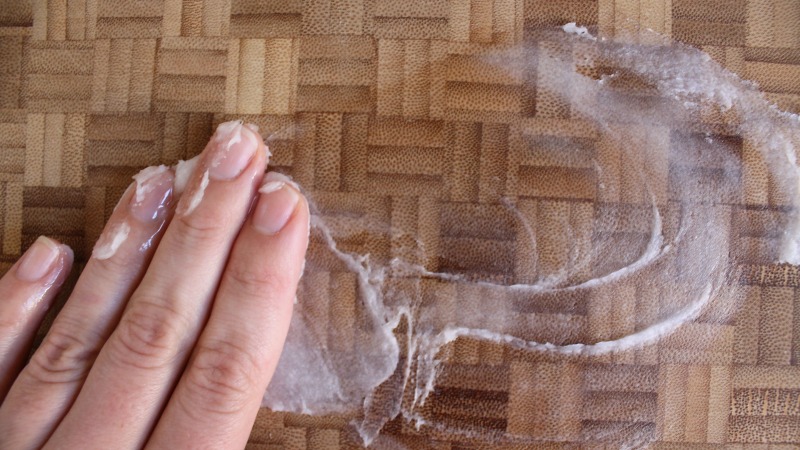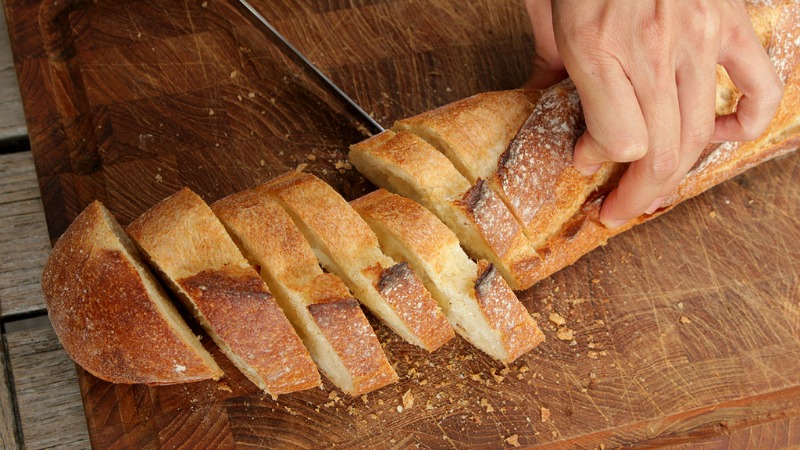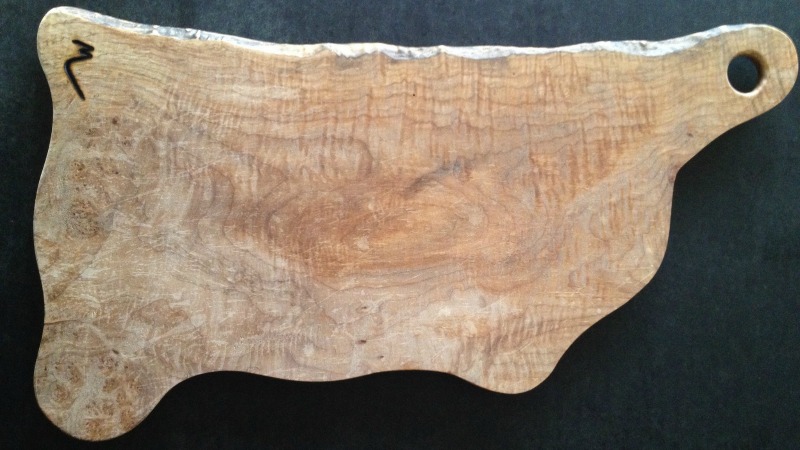If you do any amount of cooking, you’re going to need to cut, chop and slice, and that means you’re going to need a surface on which to perform all of that cutting, chopping and slicing. Cutting boards come in a variety of materials, and picking the right one can make all the difference.
Illustration by Angelica Alzona. Photos by thedabblist, Didriks and Jameson Fink.
Choose Your Material
First you need to determine which material is right for your kitchen. I’m partial to wood, both for aesthetics and functionality, but each type of board has its time and place. A tenuous case can even be made for glass.
- Wood: Not only do wood cutting boards look the prettiest but, if treated right, they can bounce back from all sorts of abuse and — according to this study from the University of California, Davis — they are naturally anti-microbial. According to Food52, hardwoods like acacia, teak and maple are your best bets, as they’re the least porous, and therefore less likely to hang on to water and bacteria. And if all that’s not enough for you, keep in mind that wood cutting boards are also the kindest to your knives, as they absorb impact from the blade without over-dulling them.
- Bamboo: Like wood, bamboo is naturally antimicrobial, but it’s a bit harder, and thus a little rougher on your blades. However, that extra density also means it’s less likely to get marred and scarred by your knives, which translates to fewer nooks and crannies for water to seep in. A dry board is less likely to warp than a moist one and, as long as you’re not soaking your bamboo board in the sink, they can last a really long time. Bamboo is also a highly renewable resource, which isn’t a bad thing.
- Plastic: I used to think that plastic was the safest, most hygienic choice for cutting boards, and reserved my wood board for “cleaner” tasks like chopping vegetables. It turns out I was going about it all wrong. Even though a plastic board can be disinfected pretty effectively in the dishwasher, plastic boards with dings and dents are impossible to disinfect with handwashing, but they are easy to toss in the dishwasher, which is a nice perk. I still keep a few around though, for chopping vegetables and other, non-raw-meat foods, simply because they’re lightweight, easy to store and easy to move around the kitchen.
- Glass and Marble: Do not use a glass and marble cutting board for cutting. They may be easy on the eyes, but they will mess your knives straight up. I am, however, a sucker for the look of marble boards, and keep one around for serving purposes. (Also, if you take photos of food for some reason, marble looks real pretty.)
Once you’ve chosen your material, you’ll need to pick a size. There are some adorable mini cutting boards out there, but they are what I like to call “completely freaking useless”. As the video above from Epicurious demonstrates, bigger is always better — at least when it comes to cutting boards — and a larger work surface is not only easier to work on, but makes the whole food-prep process a neater, more organised affair.
Prep Your Surface

Plastic boards don’t need any breaking in, but wood boards benefit from a little prep before their first use. Even though wood boards have innate microbial-fighting properties, it’s still helpful to give ’em a good coat of protective oil to keep out as much moisture and bacteria as possible. Check out Serious Eats’ complete guide to sealing your board, but it’s a pretty easy process:
- First, get a food-safe mineral oil, which you can find at the grocery store, pharmacy or even IKEA. You can also make your own wood butter, a super-charged mixture of beeswax and mineral oil that gives you a nice, solid, moisturised and protective coat. (Do not use olive oil or the like, as that can go rancid and make your board smell weird.)
- Next, pour on a whole lotta oil — like, a lot — and rub it all in with a dish towel you don’t plan to use again. Walk away for a few minutes and let the oil soak in. Repeat a couple of times if you’re doing this with a brand new board.
- After the last coat of oil has soaked in, your board is ready for duty.
As far as maintenance goes, Kenji has a quick test you can do to see if your board needs a quick refresher:
How can you tell when it’s time to oil? Using your fingertips, sprinkle a few drops of water over your board. If the board has been properly and freshly seasoned, water will bead up on its surface. This is a good indication that nothing is going to penetrate it. Over time, its water-repellent qualities will start to diminish, and water droplets will spread further and further out, clinging to the wood. Eventually, the water will look like it’s about to get absorbed into the wood even as it first lands on it. That’s a sign that you’re ready for another layer of oil.
Assuming you did a good job with your first oil treatment, you should only need to re-oil your board three or four times a year.
Clean Up Your Mess

Day-to-day cutting board maintenance is pretty simple, which is great news since you’ll use it so much. How you clean your board depends on what it’s made of.
- Wood and Bamboo: If you use your board to slice bread or chop vegetables, a full scrubbing probably isn’t necessary, and a quick wipe down with a damp rag is usually enough. But if you are dealing with meat or juicy, staining fruits, you may need take slightly more aggressive action. To clean wood or bamboo, give it a scrub with warm soapy water and dry immediately. For stubborn berry stains, sprinkle the board with coarse salt and scrub it up good with a halved lemon.
- Plastic: If you have a dishwasher, then you are in luck, for all you have to do is throw your board in there for cleaning and sanitation. If however, if all you have is a sink, you can sanitise the thing by washing it to the best of your ability with hot, soapy water; rubbing with the cut side of a lemon; and popping it in the microwave for a minute.
- Glass and Marble: You shouldn’t cut anything on either of these surfaces, but they still need to be cleaned if you’re using them as serving trays. Just wash them like you would any glass plate, either by hand or in the dishwasher, assuming the board is sturdy enough.
Even with regular cleaning and maintenance, the best cutting boards can start to show signs of wear and tear. Your board may need a little extra help every once in a while.
Give ‘Em a Little TLC

Unfortunately, there’s not much you can do to repair damage done to a plastic board, so toss and replace them once they get super marked and cut up. Wooden boards however are a different story, and can usually be brought back to life with a little extra care and elbow grease.
- For Scratches: Knife marks are unavoidable, but they’re pretty easy to get rid of. If your board starts to look a little scratchy for your taste, sand it down with a fine, wet/dry sandpaper; wipe off the dust; and re-oil.
- If It’s Warped: Wood can warp if it gets too wet, but a cutting board that’s all bent out of shape isn’t the disaster you might think it is. To flatten it back out, lay a damp cloth over the warped area and iron it until it straightens up. Place something heavy on it to keep it flat while it dries, making sure to let it dry completely before using it again.
- If It’s Stinky: Scrubbing a cutting board with coarse salt and half a lemon can help eliminate a lot of odours, but you may need a little extra help banishing more stubborn smells like garlic. Luckily, you can use the enzymes present in a potato or apple to de-funkify a smelly board. Just grate a couple of tablespoons of either one onto the surface, let it hang out for 10 minutes and wash it off.
With the proper cleaning and maintenance, a good cutting board can last you ages, potentially even becoming a prized family heirloom that you may pass down to your progeny. (Obviously, this doesn’t apply to plastic. There is no value in a vintage plastic cutting board.)

Comments